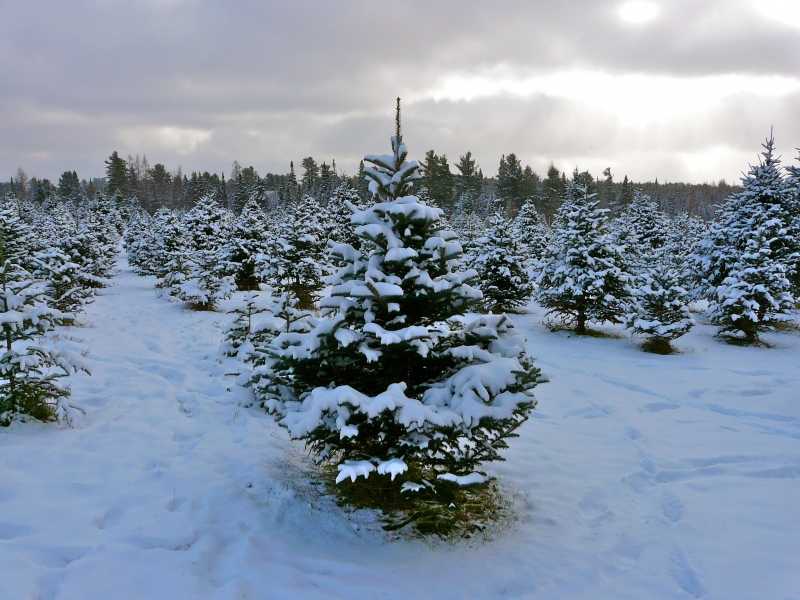
Moody Tree Farm, Saranac Lake
Nature Up North Christmas Tree Guide
With the holidays upon us, ‘tis the season to revisit the great Christmas tree debate: real vs. artificial? According to the American Christmas Tree Association, 80% of American Christmas tree buyers chose artificial trees in 2013. But did they make the greenest choice? Turns out it’s complicated. Artificial trees last longer, but most are made from unrecyclable, petroleum-based plastics that do not biodegrade. Most travel thousands of miles from China to reach your living room. Real trees are a renewable resource, but some are grown with herbicides and pesticides, and depending on where you buy them, may also travel significant distances to reach your local retailer. The best option is probably a real tree grown locally, which you compost or chip for mulch after the holidays. You’ll be supporting the local economy, and your freshly cut tree will infuse the house with that classic evergreen aroma.
Real trees also make for better stories. My family cuts a tree from a local farm every year. Some of our most cherished holiday traditions involve traveling out to a country tree farm to cut down a tree. Another cherished tradition is retelling stories of past Christmas tree-related mishaps. Every year we rehash old favorites including “That Time Dad Drove into the Garage with the Tree on Top” and “The Charlie Brown Tree Christmas.”

While many people refer to all conifers as “pines” or “Christmas trees,” you may want to familiarize yourself with a few types of conifers before picking your yultide decorations. Many different evergreen species are grown for Christmas trees across the US. In New York, firs (balsam, Douglas, and Fraser), spruce (white and blue) and pines (scotch and white) are the most commonly grown varieties of Christmas tree. Firs have flat needles, a festive evergreen smell, good needle retention, and are the most common type of Christmas tree grown locally. Blue and white spruces are also popular, and can be distinguished from firs by their pointy, four-sided needles that can be rolled between your fingers. My mnemonic for remembering the difference between spruce and fir needles: “Spiky spruce, friendly fir.”
If you prefer long needles, then scotch pines may be for you. Scotch pines retain needles well and have stout branches capable of holding heavy ornaments. Unlike spruce and fir needles, which grow individually from the branch, pine needles are generally longer, and grow in clusters of two (red pine group), three (yellow pine group), or five (white pine group). White pines are common locally, but their branches tend to droop, making them best utilized for wreaths or other decorations.
Whatever your preferred species, if you choose to cut your tree fresh from a local farm or forest, consider these few tips:
1) Trees look smaller outdoors than they will in your living room. Know your ceiling height and bring a tape measure to avoid selecting a tree that won’t fit in your house.
2) Cut a small “cookie” off the base of the trunk just before putting it in the tree stand. This will help ensure that the tree’s vascular system begins taking up water before it seals itself off.
3) It is illegal to cut trees on NY State Land. If you cut a tree from private land, make sure you have permission from the landowner.
4) Not sure what to do with your tree after the holidays? Check out these recycling ideas from the National Christmas Tree Association.
5) Is there a pond on your property? Dropping your used tree in the water can help create fish habitat. This is prohibited in public water bodies without a permit, though.
6) And finally, if you have a garage, make sure you remember that the tree is on top of the car before you drive in.
For a list of North Country tree farms and tree lots, check out the pickyourownchristmastree.org page for Northern New York. Do you know of a tree farm that’s not on the list? Please share in the comments!

